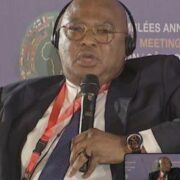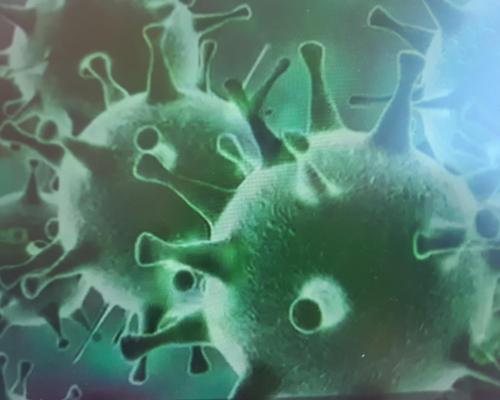The national health department is convinced that all US government funding for HIV and TB projects in South Africa will end by September 30 and has calculated that it needs R2.82bn to plug the gap for the rest of the financial year after US President Donald Trump’s administration cut more than half of such support to the country in February.
The government’s financial year runs from April 1 to March 31.
“Without such replacement funds, we won’t be able to sustain our HIV programme,” warns the department’s deputy director-general for National Health Insurance (NHI), Nicholas Crisp.
But these funds have yet to be raised, and the stakes are high: between 150,000 and 295,000 new HIV infections — in addition to about 130,000 annual new HIV infections — over the next four years, according to a Wits modelling study commissioned by the department.
And up to a 38% increase in Aids-related deaths.
That’s unless the Trump administration refunds all projects that were stopped, or the South African government takes over all the projects.
Crisp, who led the calculations, says the R2.82bn is based on salary data of the 24,264 full-time and part-time employees of current and previously US-government-funded HIV and TB organisations. The health department asked the US President’s Emergency Plan for Aids Relief (Pepfar), which supported the projects, for the figures so that it could work out how much money it would need to appoint formerly Pepfar-sponsored workers.
Why USAID projects left a gap
Pepfar supported South Africa’s efforts to fight HIV and TB for the current US financial year — from October 1 2024 to September 30 2025 — to the tune of $439,537,828 (about R8.3bn at the current exchange rate).
The money was sent to the country via either the US Agency for International Development (USAID) or the Centers for Disease Control & Prevention (CDC). Most of the funds went to nonprofit organisations helping the government to reach its HIV and TB goals, though private companies, public institutions, the basic education department, and the national and provincial health departments were also awarded grants.
Crisp says Pepfar data shows about 57% of funds spent on salaries and consulting fees were channelled through USAID and 43% via the CDC.
The staff complement of Pepfar-funded organisations came to 13,741 health workers (8,493 full-time; 5,248 part-time) who were funded via USAID and 10,523 (7,046 full-time; 3,477 part-time) whose salaries were paid via the CDC. Together, this makes up the total of 24,264 workers.
Most of the workers are data capturers (12.5%), lay counsellors (11.1%), professional nurses (9.6%), middle managers (6.4%) and youth workers (6.2%).
In total, there were 39 prime partners, which often received large chunks of money that were then subgranted to smaller organisations to carry out work on the ground, and 150 “implementing partners”, which either received smaller direct grants or subgrants.
On February 26, however, the Trump administration ended all Pepfar-funded projects in South Africa that got their money through USAID, as part of a global foreign aid cut.
The few USAID projects in the country that didn’t receive termination letters never received funds to continue their activities, Bhekisisa has learnt, and have mostly also closed their programmes.
Crisp says the available data shows that of the total Pepfar budget for South Africa (so for all costs, not just salaries) for this financial year of R8.3bn, about R4.45bn was received via USAID.
On the other hand, projects funded through the CDC have been allowed to continue with their full budgets after a US federal court ordered the Trump administration to do so, but they only have funds until September 30.
According to the US government, 21 CDC-funded organisations are still operating with Pepfar funds in South Africa.
Will funding for South Africa continue after September 30?
What happens after September 30 will depend on how the US Congress votes on the budget President Donald Trump submits, explains a former Pepfar staff head, Jirair Ratevosian.
Ratevosian, who is an associate research scientist at Yale University, says a process known as “passback”, during which agencies and government departments, such as the state department under which USAID falls, advocate for budgets, started this week.
A leaked White House document, which The New York Times has seen and reported on this week, proposes that Pepfar continues to exist for the 2026 financial year in the US with a budget of $2.9bn — but that it mainly focuses on HIV treatment and not prevention.
“That might seem like a substantial amount in isolation, but it represents a 40% reduction from the current budget,” warns Ratevosian, “so if Congress votes to put through the Trump budget as is, more than half of programmes will undoubtedly be cut. And we don’t yet know if rules for what can and what can’t get funded will get even stricter.”
Trump also announced a 90-day review of foreign aid on January 20, the day on which he was inaugurated. That review technically ends on Sunday April 20; the president would need to announce the way forward.
But many people are confused. Local CDC-funded organisations say they have no idea, and neither do their contracting officers from the US government, whether the review is still ongoing.
Ratevosian, however, says he suspects there could be an announcement by Friday: “This is an important week in Congress, with a lot of back and forth between the budget office and other offices within the state department, which seems to suggest there could be some kind of conclusion announced as to where foreign aid is headed.”









Comments